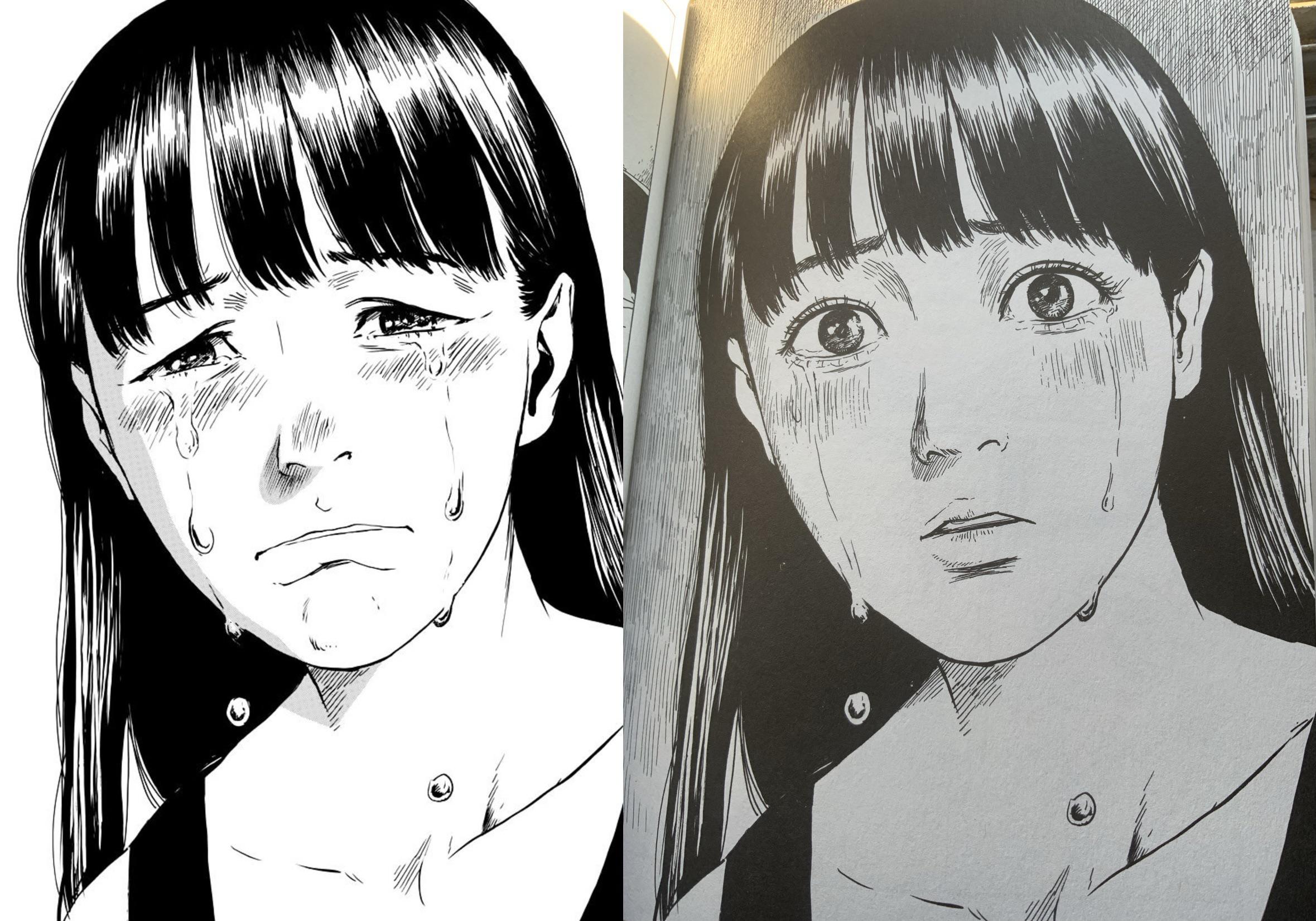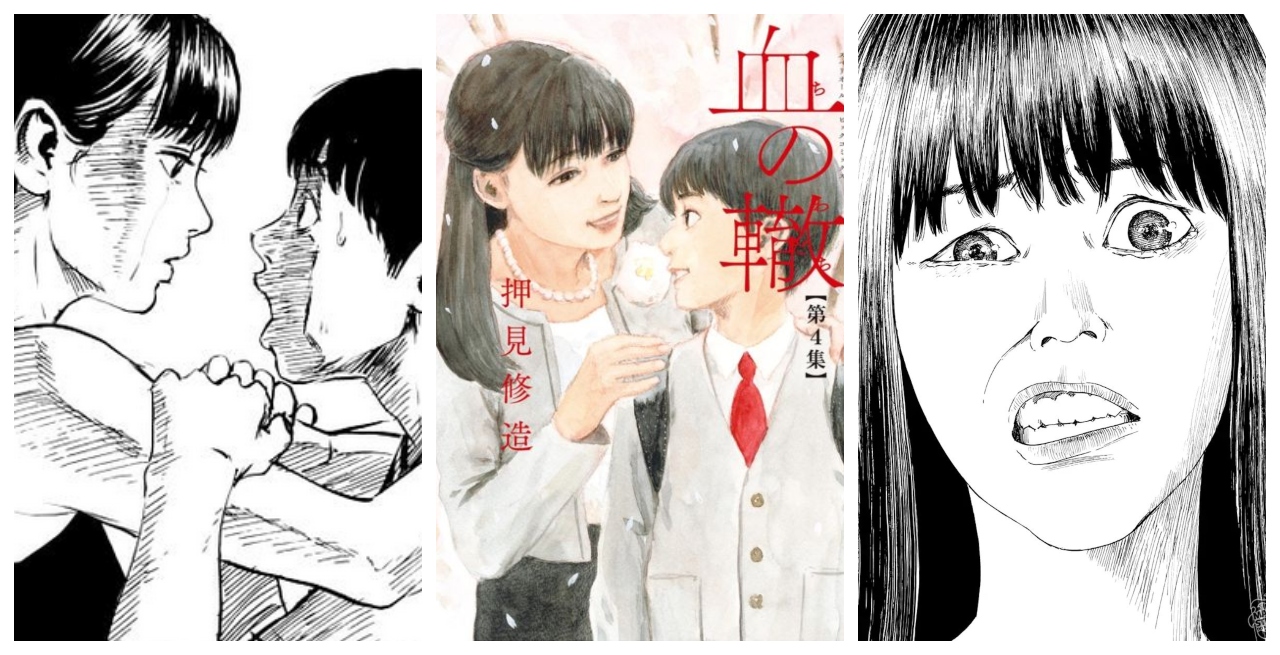This Blood on the Tracks review dives into Shuzo Oshimi’s haunting exploration of family, control, and psychological dread. At first glance, the story feels ordinary until subtle shifts unravel into suffocating horror. With unsettling visuals, masterful pacing, and a chilling mother-son dynamic, Oshimi crafts a domestic nightmare that lingers long after the last page. Available on ComicK, this manga is a must-read for fans of dark, psychological storytelling.
A Personal Introduction to Oshimi’s Darkness
When I first picked up Blood on the Tracks on ComicK, I thought I was stepping into another slice-of-life manga with soft tones and family warmth. But Shuzo Oshimi doesn’t deal in comfort he lures you into it, then slowly peels it away until you’re left exposed. Reading this series feels like walking through a familiar home where every shadow hides a secret.
What struck me immediately was how ordinary everything seemed. Seiichi, the young protagonist, lives a life that many readers might recognize school, friends, a caring mother. But Oshimi is a master of unease, using stillness and silence to plant the feeling that something is very wrong beneath the surface.

As the pages turn, that sense of dread crystallizes into something unforgettable. It’s not about jump scares or gore; it’s about how fragile love can twist into obsession. And that’s where Oshimi captures you: in the quiet horror of the everyday.
The Calm Before the Storm
The first chapters almost lull you into thinking this is a coming-of-age story. Sei’s world is built from routines his father’s long hours, his mother’s gentle presence, dinners that always seem perfectly arranged. Everything feels safe, even mundane.
Yet, it’s exactly that ordinariness that makes the later unraveling so terrifying. Oshimi stretches moments, lingers on faces, and inserts silences that leave you unsettled. You’re waiting for something, though you can’t quite name what it is.
This buildup is not accidental. It’s Oshimi’s signature pacing: the slow tightening of a rope around your chest until you can hardly breathe. When the moment of rupture finally comes, it feels both shocking and inevitable.
The Mother-Son Relationship That Chills to the Core
Seiko, Sei’s mother, is perhaps one of the most unsettling characters I’ve ever encountered in manga. At first, she appears kind, doting, almost the ideal parent. But her devotion is suffocating, and it’s in her small gestures too close, too controlling that the horror begins to show.
What makes Seiko terrifying is not her violence, but her love. She genuinely believes she’s protecting her son, even as her actions strip away his independence and growth. It’s love weaponized into a cage, a kind of devotion that corrodes rather than nurtures.
For readers, this dynamic is deeply disturbing because it feels real. It’s not a monster under the bed or a ghost in the shadows it’s family, the place where you should feel safest, turning into a source of trauma.
Visual Storytelling: Silence, Stillness, and Shock
Oshimi’s art in Blood on the Tracks is deceptively simple, yet every panel is loaded with intent. His use of pauses lingering close-ups, empty backgrounds creates an atmosphere where the smallest shift in expression feels monumental.
When violence finally does erupt, it isn’t flashy. It’s framed with chilling clarity, as if you’re watching something you shouldn’t see, unable to look away. The paneling itself becomes part of the horror, forcing you to dwell on moments you’d rather escape.
This attention to visual metaphor cliffs, open skies, the framing of “ordinary” scenes turns the manga into more than just a story. It becomes an experience, one that manipulates time, perspective, and emotion to leave you haunted.

Themes of Control, Trauma, and Corruption
Beneath the family drama lies Oshimi’s real exploration: the psychology of control and the corrosion of innocence. Sei is caught in a web woven by his mother’s obsession, and as readers, we witness his slow unraveling.
The series asks uncomfortable questions. How much of who we are is shaped by those closest to us? At what point does love become possession? And what happens when the people meant to protect us are the ones who cause the most harm?
This is where Blood on the Tracks transcends horror and becomes something more intimate. It doesn’t just shock it forces reflection. The story sticks because it echoes real fears about family, identity, and freedom.
Why You Should Read It on ComicK
I’ll be honest: Blood on the Tracks is not an easy read. It unsettles, it disturbs, and it lingers. But that’s exactly why I recommend it. If you’re looking for a manga that challenges you emotionally, that keeps you thinking long after you close the page, this is it.
On ComicK, the reading experience feels seamless you can immerse yourself fully in Oshimi’s deliberate pacing and chilling artwork. And trust me, once you finish one volume, you’ll be desperate to grab the next.
It’s rare to find a manga that blends domestic life with such suffocating psychological dread. Blood on the Tracks does it masterfully, making it one of Oshimi’s most powerful works to date.
Read more:
- Exploring the Heartwarming Slice of Life in Insomniacs After School
- Majo to Kishi wa Iki nokoru Review: Mystery in the Forbidden Woods
